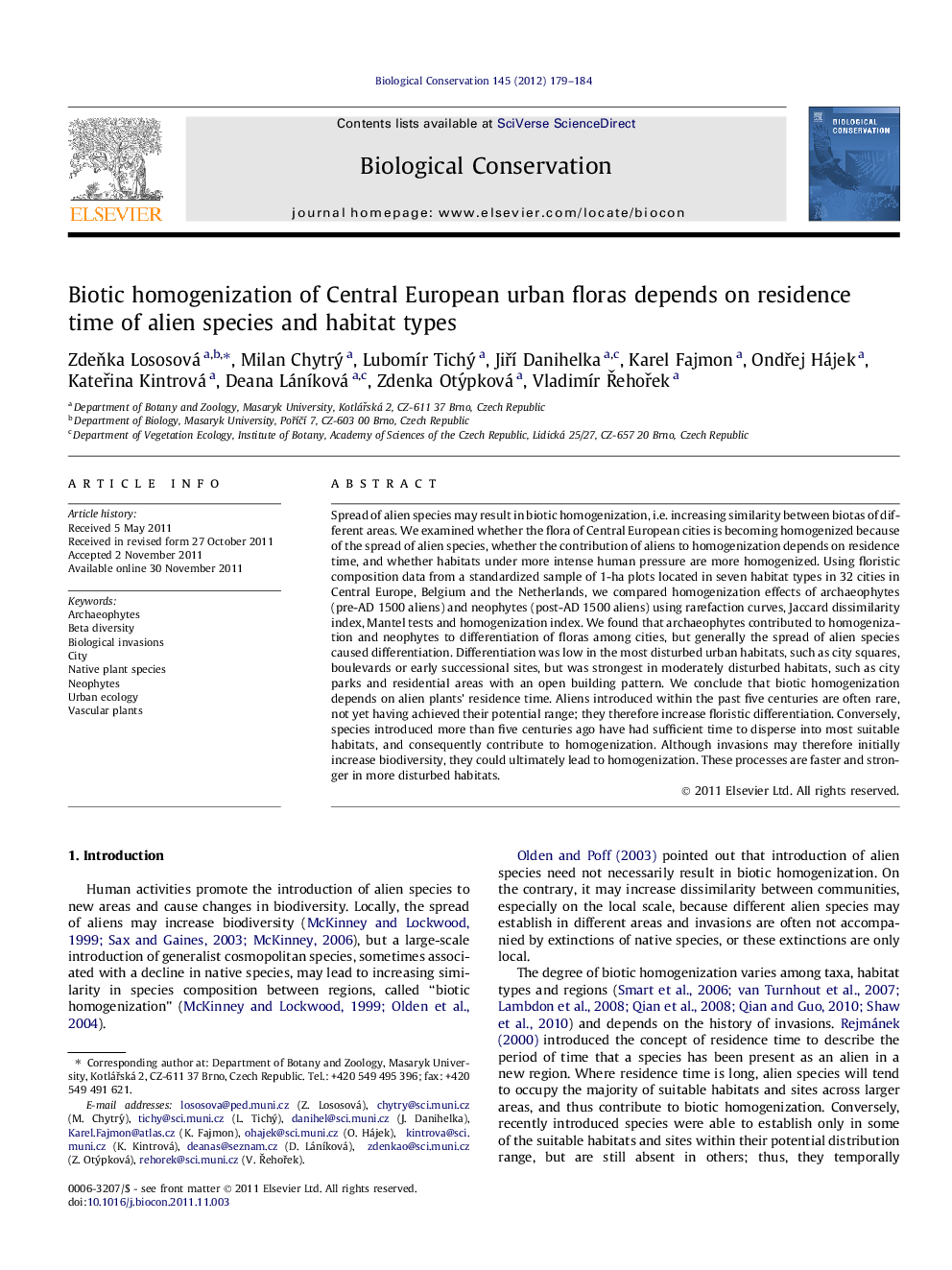| کد مقاله | کد نشریه | سال انتشار | مقاله انگلیسی | نسخه تمام متن |
|---|---|---|---|---|
| 4385364 | 1304533 | 2012 | 6 صفحه PDF | دانلود رایگان |

Spread of alien species may result in biotic homogenization, i.e. increasing similarity between biotas of different areas. We examined whether the flora of Central European cities is becoming homogenized because of the spread of alien species, whether the contribution of aliens to homogenization depends on residence time, and whether habitats under more intense human pressure are more homogenized. Using floristic composition data from a standardized sample of 1-ha plots located in seven habitat types in 32 cities in Central Europe, Belgium and the Netherlands, we compared homogenization effects of archaeophytes (pre-AD 1500 aliens) and neophytes (post-AD 1500 aliens) using rarefaction curves, Jaccard dissimilarity index, Mantel tests and homogenization index. We found that archaeophytes contributed to homogenization and neophytes to differentiation of floras among cities, but generally the spread of alien species caused differentiation. Differentiation was low in the most disturbed urban habitats, such as city squares, boulevards or early successional sites, but was strongest in moderately disturbed habitats, such as city parks and residential areas with an open building pattern. We conclude that biotic homogenization depends on alien plants’ residence time. Aliens introduced within the past five centuries are often rare, not yet having achieved their potential range; they therefore increase floristic differentiation. Conversely, species introduced more than five centuries ago have had sufficient time to disperse into most suitable habitats, and consequently contribute to homogenization. Although invasions may therefore initially increase biodiversity, they could ultimately lead to homogenization. These processes are faster and stronger in more disturbed habitats.
Figure optionsDownload as PowerPoint slideHighlights
► Does homogenization of urban floras depend on residence time of aliens and types of urban habitats?
► We found that neophytes contribute to differentiation but archaeophytes to homogenization.
► Homogenization is stronger in more disturbed habitats.
► Initial invasions tend to increase floristic diversity.
► After longer time, invasions lead to homogenization, which is faster in more disturbed habitats.
Journal: Biological Conservation - Volume 145, Issue 1, January 2012, Pages 179–184